Head West to Spot a Spotted Towhee
Updated: Jan. 10, 2024
The spotted towhee was once called the rufous-sided towhee. Hear their song, learn what they eat and see what males and females look like.
On This Page
What Does a Spotted Towhee Look Like?
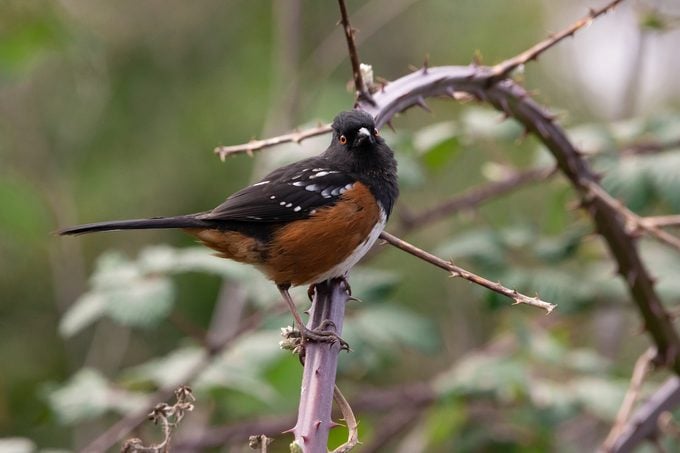
A male spotted towhee has a black head, back and tail with a white belly, orange-red sides and multiple white wing marks. A female looks similar, but has gray or brown accents instead of black. Both males and females have red eyes.
- Scientific Name: Pipilo maculatus
- Family: Sparrow
- Length: 8-1/4 inches
- Wingspan: 10-1/2 inches
- New Name: Older field guides show the rufous-sided towhee as a single widespread species. Researchers split this species into the eastern towhee and spotted in 1995.
Meet the towhees: The birds scratching up a storm in your backyard.
Spotted Towhee vs Eastern Towhee
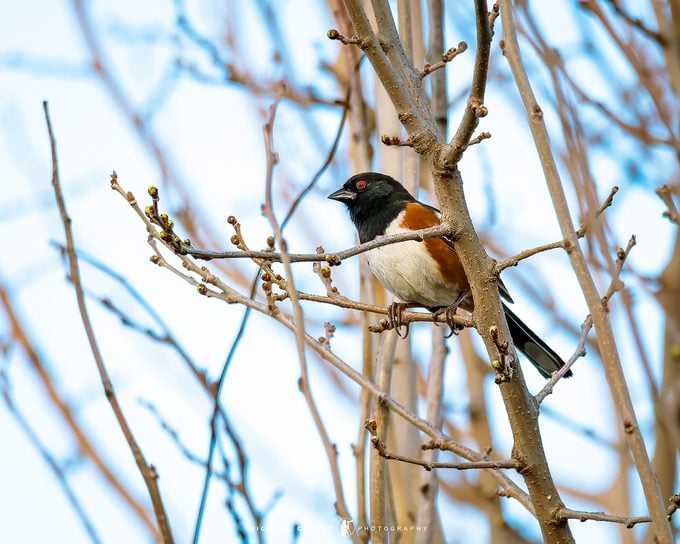
“I was told this is an eastern towhee, but I live in the San Joaquin Valley in California. Is it?” asks Birds & Blooms reader Michael Caskey of Fresno, California.
Birding experts Kenn and Kimberly Kaufman say, “The eastern towhee is replaced in the western states by a close relative, the spotted towhee. These two species are very similar, but the spotted towhee has more white markings on the wings and usually some white spots on the back. In your photo (above), we can see just enough of the white in the wing to be sure that this is the spotted towhee, not the eastern.
This species can be found year-round in your area of California, although it’s more common in the mountains in summer and down in the valleys during winter.”
Nest and Eggs
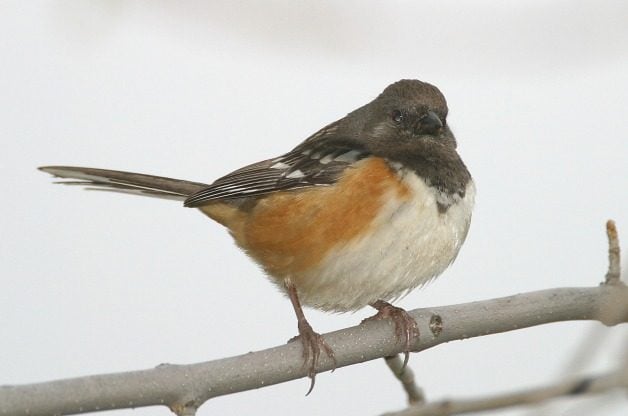
This bird builds a nest on or near the ground using leaves, stems, pine needles and more. The female lays two to six gray, white, pinkish or greenish speckled eggs.
All about sparrows: What birders should know.
Spotted Towhee Song
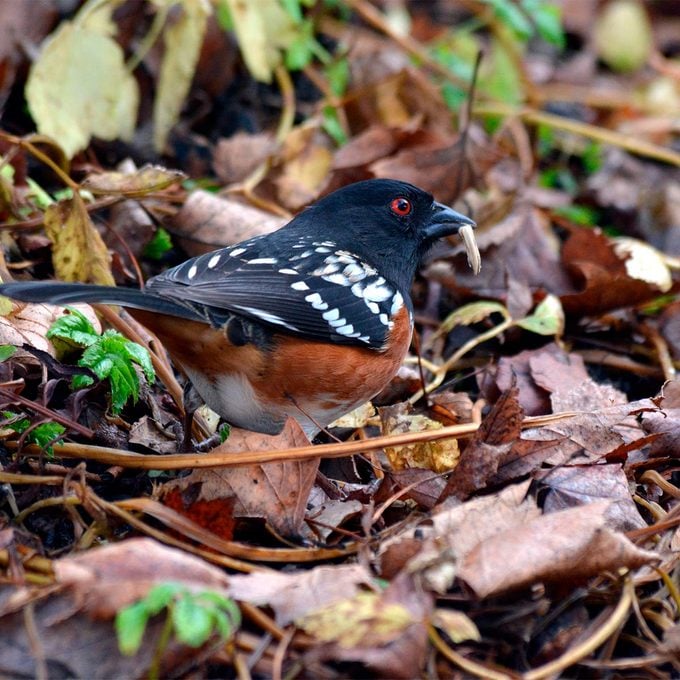
This species sings a wide variety of songs, which typically feature high-pitched introductory notes followed by a trill. The bird also makes a buzzy rapid trill.
Listen to the spotted towhee’s song.
Bird songs provided by the Cornell Lab of Ornithology.
What Do Spotted Towhees Eat?
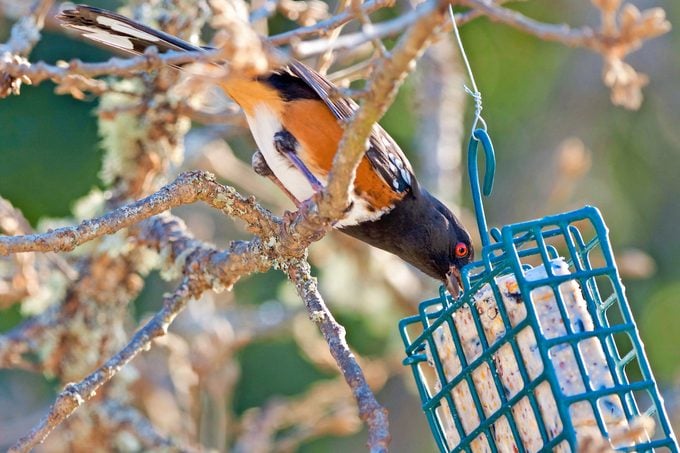
Their diet primarily consists of insects, spiders, caterpillars, seeds, berries; sometimes small lizards or snakes. Backyard favorites include oats or seeds scattered on the ground, as well as suet.
Learn how to identify a chipping sparrow and a song sparrow.
Range Map and Habitat
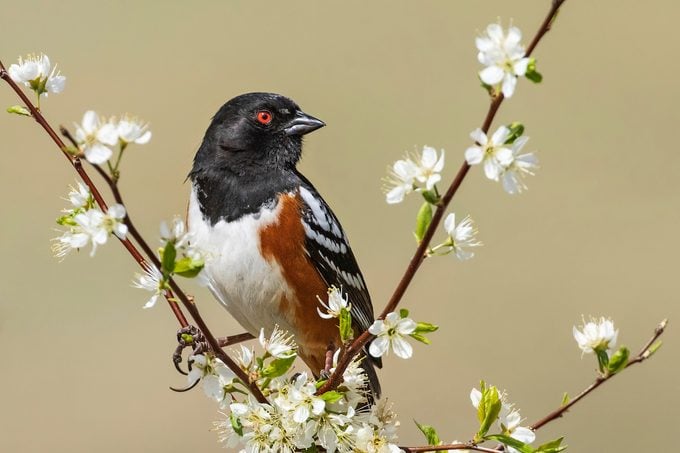
Look for these birds in old pastures, woodland edges and brushy backyards in states west of the Mississippi River. Some birders in the west can see this species year-round, but the birds that spend summer in the northernmost part of their range do migrate in winter.
Birds & Blooms reader Neal Zaun writes, “The spotted towhee inhabits many areas of western North America. The species tends to prefer forest edges, thickets and shrubby park areas.”
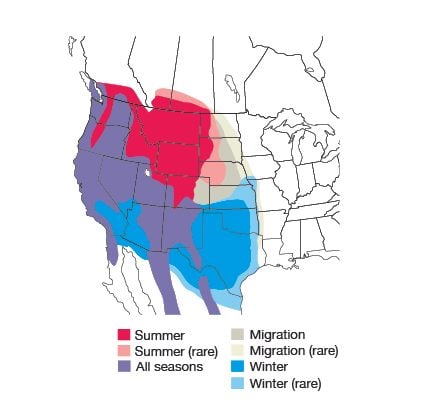
Range maps provided by Kaufman Field Guides, the official field guide of Birds & Blooms.
Next, meet the white crowned sparrow and white throated sparrow.
Why Trust Us
For nearly 30 years, Birds & Blooms, a Trusted Media Brand, has been inspiring readers to have a lifelong love of birding, gardening and nature. We are the #1 bird and garden magazine in North America and a trusted online resource for over 15 million outdoor enthusiasts annually. Our library of thousands of informative articles and how-tos has been written by trusted journalists and fact-checked by bird and garden experts for accuracy. In addition to our staff of experienced gardeners and bird-watchers, we hire individuals who have years of education and hands-on experience with birding, bird feeding, gardening, butterflies, bugs and more. Learn more about Birds & Blooms, our field editor program, and our submission guidelines.
Sources
- Kenn and Kimberly Kaufman, Kaufman Field Guides
- Cornell Lab of Ornithology
- Project NestWatch
